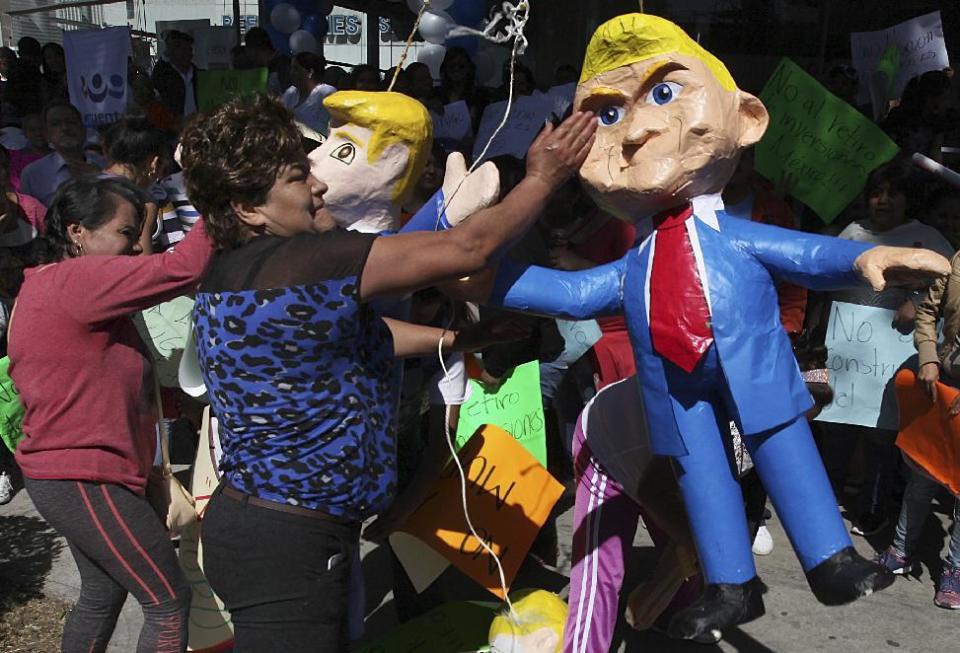How Trump will get his 'border tax'
President Donald Trump needs Congressional action to help push his agenda on tax cuts, infrastructure spending, Obamacare repeal and many other campaign promises. But on trade, Trump can do quite a lot on his own—and he seems poised to act.
Trump has already pulled the United States out of the Trans Pacific Partnership, negotiated under President Barack Obama, which would have bound the United States and 11 other nations in a new trade pact. More importantly, he recently told a gathering of CEOs he would impose “very major” tariffs on companies that move operations out of the United States. That follows other threats to impose new tariffs of 35% or more to punish companies that build products outside the United States, for sale inside the country. Examples:
General Motors is sending Mexican made model of Chevy Cruze to U.S. car dealers-tax free across border. Make in U.S.A.or pay big border tax!
— Donald J. Trump (@realDonaldTrump) January 3, 2017
Toyota Motor said will build a new plant in Baja, Mexico, to build Corolla cars for U.S. NO WAY! Build plant in U.S. or pay big border tax.
— Donald J. Trump (@realDonaldTrump) January 5, 2017
On some issues, Trump’s bark is worse than his bite. But on tariffs and other matters relating to trade, Trump can largely do what he wants, without any new legislation or permission from anybody. “These powers have been granted to the president by Congress over the last 100 years, in multiple statutes,” says trade expert Gary Hufbauer of the Peterson Institute for International Economics. “Can it be challenged in court? Not successfully, in my view.”
What Trump can and can’t do
Trade laws can be interpreted as allowing the president to impose tariffs, which Trump calls border taxes, on just about any product he chooses. He could even single out individual products made by companies he considers particularly un-American—such as a particular automobile made in Mexico—using detailed tariff schedules for imports and identifying information that would only apply to the product Trump chose to target.
Trump can’t slap tariffs on products imported from Mexico (or Canada) right away, because of the North American Free Trade Agreement, which eliminates tariffs. But he can withdraw the United States from NAFTA by merely notifying the other two signatory nations that he intends to do so; withdrawal would become effective six months later. At that point, Trump would be able to impose tariffs.
He could impose tariffs on imports from China and most other countries sooner. But that wouldn’t necessarily be wise—and it could turn out to be reckless. For starters, Congress is supposed to have a role in major trade decisions, even though laws passed over the years have strengthened the president’s hand. Thing is, no president has hiked tariffs on his own since Herbert Hoover in the early 1930s, and that came after Congress paved the way for him by passing the protectionist Smoot-Hawley Act of 1930.
Many Congressional Republicans favor free trade and oppose new tariffs, which means Trump could irk allies he needs for other priorities. “Congress believes it has the first and last word on trade,” says Hufbauer. “If he ignores that, people will come back at him on other issues where he needs their votes.” Still, that may not faze Trump.
Challenges to tariffs
Singling out specific products or companies runs risks, too. Any company hit with new tariffs in a seemingly arbitrary way, for instance, could argue that such action violates constitutional rights such as due process or equal protection. The laws governing trade also have limitations. The laws granting the president the most power, for instance, require the president to cite a national emergency, such as war. If Trump weren’t willing to go that far, he’d be operating within a narrower claim of presidential authority. Under just about every scenario, legal action challenging the imposition of tariffs seems possible and perhaps likely. (That may not bother Trump, either.)

A different type of tariff applies to instances where the United States charges a trading partner with “dumping” products into the US market at artificially low prices, undercutting domestic producers. Trump has said he’ll be aggressive on this as well, following action Obama took on dumping of products such as Chinese steel. Such cases usually go to US courts or the World Trade Organization, and can take years to play out, which doesn’t seem to fit with Trump’s preference for quick results he can tweet about while voters are still paying attention.
The biggest risk may be retaliation by other countries, if Trump hikes tariffs on their imports. Mexico has little leverage against the United States and is very vulnerable to Trump’s saber rattling. But China is a different story. “China is the big wolf,” says economist Barry Bosworth of the Brookings Institution. “And US investments in China are far larger than Chinese investments in the United States.” That could portend a lot of trouble for American companies relying on China for a major portion of sales, including Apple (AAPL), Boeing (BA) and General Motors (GM).
Trump, of course, has a habit of threatening hellfire and damnation, then making deals that let him claim victory with modest concessions on the other side. He has praised GM and Ford (F) for instance, for announcing new investments in US plants, even though they plan to continue production in Mexico as well. So the threat of tariffs may be an opening bid in negotiations that lead to something far less disruptive. Only Trump himself knows, for now.
Rick Newman is the author of four books, including Rebounders: How Winners Pivot from Setback to Success. Follow him on Twitter: @rickjnewman.

